Before the high-voltage isolating switch is put into operation, the isolation switch insulation bushing fault found in the routine test is analyzed. Taking into account the actual situation and experience, we found out the root cause of the fault, and carried out effective treatment, focused on the specific treatment methods, and proposed measures to prevent the occurrence of the isolation switch failure.
Key word isolation switch; porcelain bottle failure; processing method
In the insulation test of the outdoor isolation switch GW1-12/2000A in a 10 kV system before commissioning, it was found that the insulation level of the C-phase knife gate was far lower than the regulation requirements. The insulation level of the isolating switch does not meet the system operation requirements, which will seriously affect the safe operation of the system.
The system in which the isolating switch is located is shown in Figure 1. The front of the fault isolation switch is a current transformer, followed by a three-winding 10 kV step-down transformer. The isolating switch and the step-down transformer are connected by the bronze of 100&TImes;8, and the secondary side cable of the transformer is not yet connected.
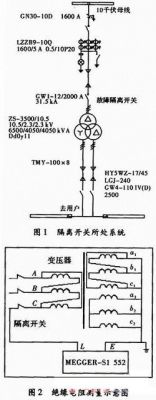
The isolating switch and the transformer are tested for insulation at the same time. The insulation resistance is measured by the MEGGER-S1-552 electronic megohmmeter through the isolating switch. The measuring voltage is 2 500 V. The test principle and method are shown in Fig. 2.
The insulation resistance value measured by the above hair extension measurement is only 24.5 MΩ. The tester compares the transformer field test data with the factory test data. The factory test transformer insulation resistance is on the order of GΩ, and the field data is less than the factory data. /10, it can be seen that the test data is seriously less than the factory test data, and there is a significant difference from the historical data.
The test environment is in good condition, the weather is fine, and the air humidity is small. After eliminating the influence of environmental factors, the tester decides to separate the isolation switch and separately conduct insulation test on the transformer to check whether the transformer damages the insulation level during transportation or installation. . The individual tests for the transformer are shown in Table 1.
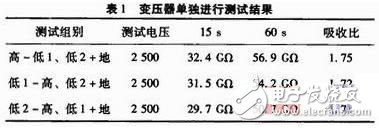
From the test data, the insulation resistance value of the transformer is higher, and the absorption ratio of the insulation resistance is also higher. The test result is close to the factory test result, so it can be judged that the insulation level of the transformer is not defective.
By separately testing the transformer and not finding defects, it can be concluded that the defect is in the isolating switch. Perform separate insulation tests on the isolating switch and test the three phases separately: close the knife gate, connect the high voltage end to the static contact of the knife gate, connect the low voltage end to the base of the knife gate, and ground. The test principle is shown in Figure 3.
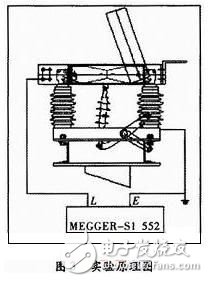
The insulation resistance value measured by the above hair extension measurement is only 24.5 MΩ. The tester compares the transformer field test data with the factory test data. The factory test transformer insulation resistance is on the order of GΩ, and the field data is less than the factory data. /10, it can be seen that the test data is seriously less than the factory test data, and there is a significant difference from the historical data.
The test environment is in good condition, the weather is fine, and the air humidity is small. After eliminating the influence of environmental factors, the tester decides to separate the isolation switch and separately conduct insulation test on the transformer to check whether the transformer damages the insulation level during transportation or installation. . The individual tests for the transformer are shown in Table 1.
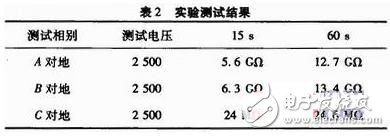
From the test data, the insulation resistance value of the transformer is higher, and the absorption ratio of the insulation resistance is also higher. The test result is close to the factory test result, so it can be judged that the insulation level of the transformer is not defective.
By separately testing the transformer and not finding defects, it can be concluded that the defect is in the isolating switch. Perform separate insulation tests on the isolating switch and test the three phases separately: close the knife gate, connect the high voltage end to the static contact of the knife gate, connect the low voltage end to the base of the knife gate, and ground. The test principle is shown in Figure 3.
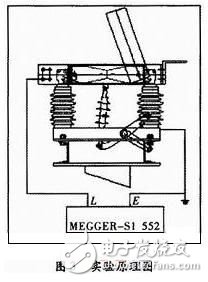
Nanning Ousibang Information Technology Co., Ltd. , https://www.ousibangvape.com